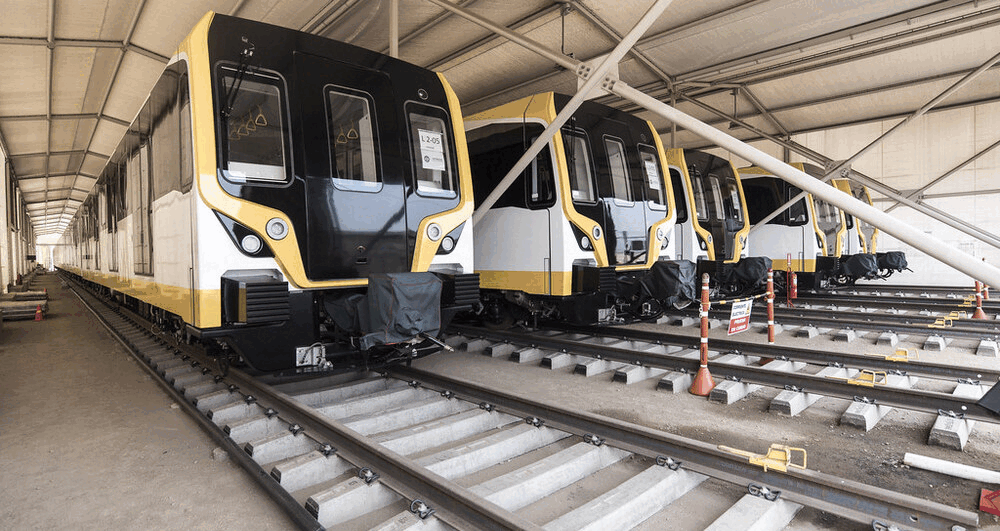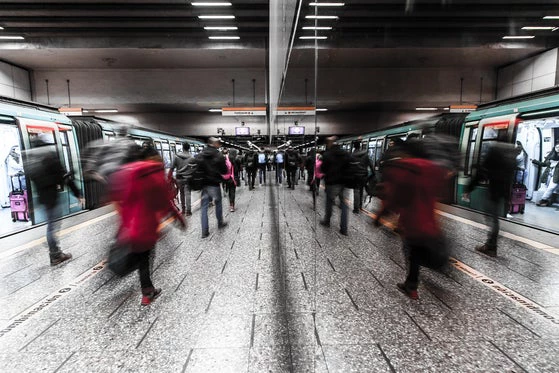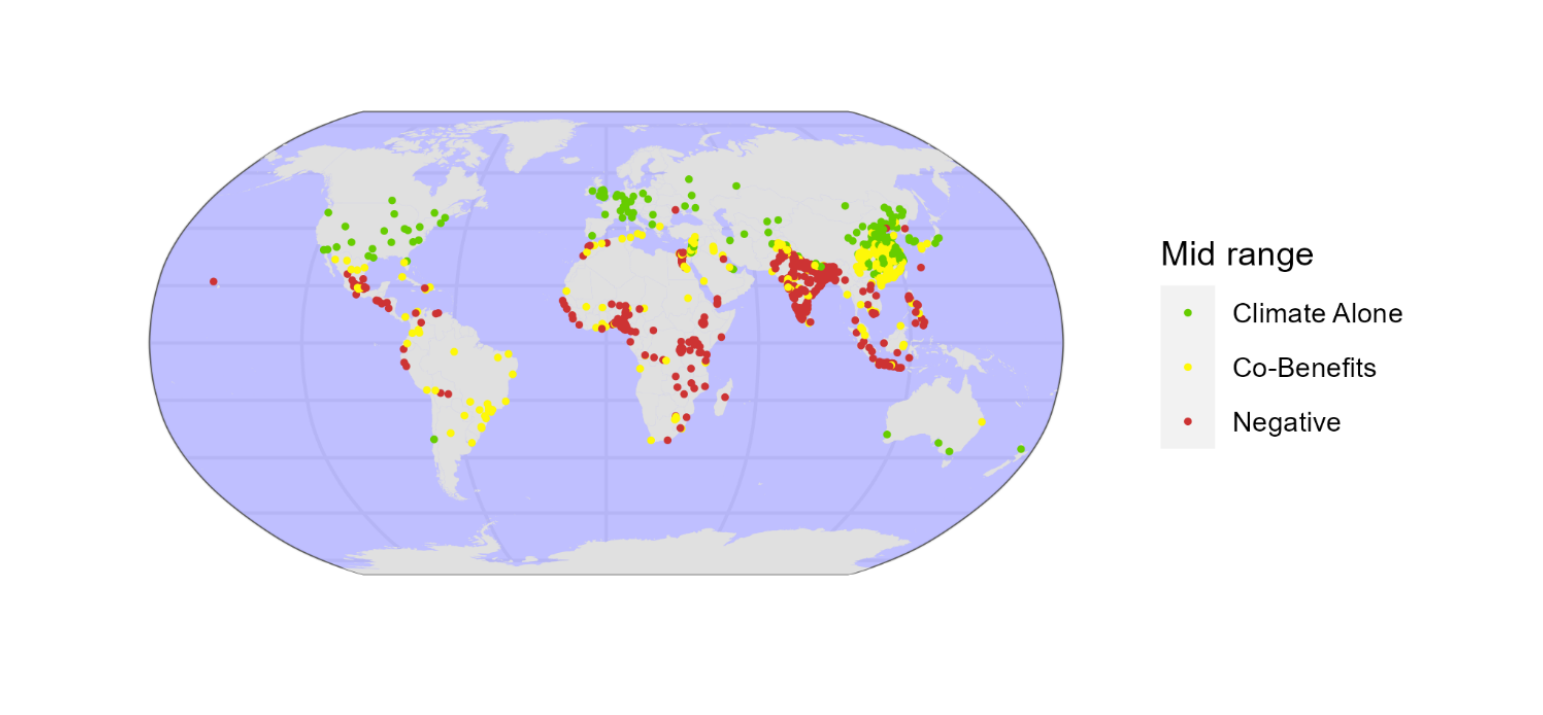The climate crisis is getting worse, with both the Intergovernmental Panel on Climate Change (IPCC) and COP28 in its final agreement emphasizing the urgency of steep greenhouse gas emissions reductions to keep global warming below 1.5°C as overshooting 1.5° C might have a catastrophic impact.
Given that urban areas may account for over 70 percent of global CO₂ emissions, many public policy analysts began advocating for public investment in low-carbon mass transit, particularly in countries that are not yet locked into high-carbon growth paths, as one of the solutions. Until recently, however, data scarcity has hindered assessment of mass transit’s impact on CO₂ emissions.
Quantifying subway systems’ impact on CO₂ emissions
Recent World Bank research used new satellite data to quantify the impact of subway investments. Subways’ impacts on CO₂ emissions were assessed with the help of World Bank’s new satellite-based carbon emissions database, which provides consistent measures across space and time of CO₂ emissions from urban areas. The research covered 1,474 urban areas with populations exceeding 500,000, measuring subway impacts after accounting for source differences (e.g., industries, fires, motor vehicles, cooling, heating) in cities and nearby areas. Results indicate subways have had a huge impact on CO₂ emissions in urban areas where they operate.
Currently, 192 urban areas are served by subways. After having computed their CO₂ emissions with and without subways with other things equal, the research shows that existing subway systems have cut CO₂ emissions by about 50 percent in those cities, which translates to an 11 percent reduction in all global CO₂ emissions.
Many other urban areas are promising candidates for decarbonizing subway investments
The research also assessed potential impacts of subways on 1,214 urban areas with populations exceeding 500,000 inhabitants, but currently without subways. The analysis predicts annual emissions with and without subways through 2050, using forecasts of population, income per capita, and other factors. Using a range of estimates for subway installation costs (SIC) and the social cost of carbon (SCC), the research identified economically justified subway projects in various scenarios.
Under optimistic assumptions [SCC US$150/ton; SIC US$140 million/km], 794 cities are viable candidates, rising to 465 cities in midrange scenarios [SCC US$100/ton; SIC US$200 million/km] and 294 cities in pessimistic cases [SCC US$50/ton; SIC US$280 million/km]. Additionally, the potential for CO₂ emissions reduction reaches an impressive 77 percent with widespread subway installation.
Therefore, the results suggest that large-scale subway investments can accelerate the transition to a low-carbon economy while providing a cost-effective complement to incentive approaches such as carbon pricing, emissions taxation, or emissions permit trading.
Worldwide, many urban areas currently suffer from traffic congestion and vehicular air pollution. Many empirical studies pointed out that vehicular emissions, a major contributor to health issues in developing countries, are substantially reduced with increased subway usage. Furthermore, studies in various urban areas have highlighted productivity increases and travel time reductions following subway construction.

(Image sources: Yayo Lopez/World Bank, Guillermo GPhoto/Shutterstock, Ricardo de O.Lemos/Shutterstock)
List of subway-candidate cities
As the world grapples with the climate crisis, subway expansions present a viable and urgent opportunity for meaningful climate action. World Bank research results to date show that rapid subway expansion provides an excellent opportunity for significant reduction of carbon emissions in our efforts to address climate change. However, subways are expensive, construction periods are long, and cost of operation and maintenance of subways is also high. A recent study by Levy (2019) of 207 subway projects in 47 countries reported a median cost of US$200 million/km and much higher costs in some cases. KPMG International has estimated that annual outlays for operations and maintenance are about 2 percent of initial investments. Therefore, overall impact assessments of subways are critical before making investments.
World Bank research provides a preliminary list of urban areas which qualify for subways on climate (CO₂ reduction) benefits alone and on climate benefits along with other co-benefits. It is hoped that this list of subway-candidate cities, which can be accessed here, will help provide a baseline for regional and national decision makers into their city planning. As context matters, these data can be combined with other development datasets to derive new insights using a variety of analytical/visualization tools to support a wide range of applications.
To know more about the technical analysis, please read the paper: "Subways and CO₂ Emissions: A Global Analysis with Satellite Data", published in the Elsevier Journal Science of The Total Environment, 883, 163691 (DOI).
The authors gratefully acknowledge the financial support from the Knowledge for Change Program and edits from Ms. Karolina Ordon Mazurkiewicz.







Join the Conversation